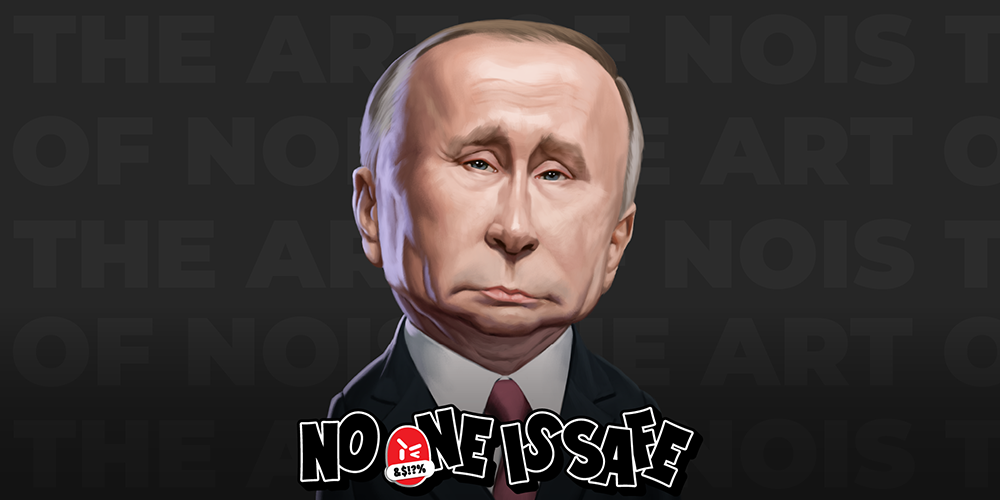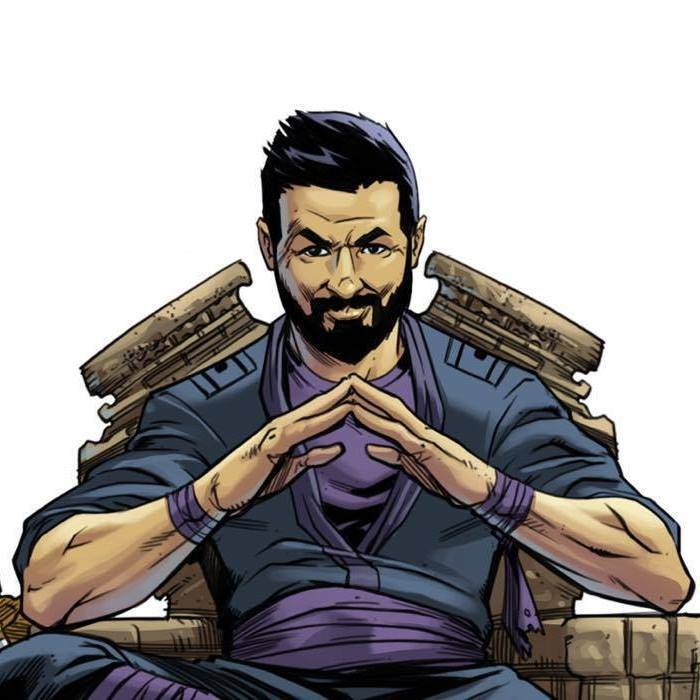Liithos Team Spotlight: Drawing Laughter with Court Jones

As we continue our journey through the amazing talents behind Liithos, we are excited to shine a spotlight on more of the incredible individuals who contribute to our groundbreaking projects in the entertainment and gaming industries.
Meet Court Jones, a career-long caricature artist with an extensive foundation in traditional art and the face behind the faces and characters of Liithos’s No One Is Safe game and Trading Cards. Court combines his talents to create characters for Liithos with a realistic twist, but who is also funny and exaggerated at the same time.
Can you share a bit about your role at Liithos and how your unique approach to caricature artistry contributes to the team's creative projects?
I’m the Lead Character Designer. I create concepts and render character caricatures to be used as 3D models for the game and the trading card set. I take both real and fictional characters (think Taylor Swift and Mario) and put my own spin on them.
Explain Spinning It “Court-Style?”
Caricatures can be done on a spectrum from mild to crazy. Early on, during the first couple of character designs I did for the game, my Art Director, Nick Martinelli, helped me find the level of exaggeration for all the characters moving forward. Once we got that established, the work proceeded more smoothly. And as long as the likeness is strong, it’s funny and the construction looks solid, Nick and the rest of the Liithos team have always encouraged me be myself and let my personal style show through with my brushwork, exaggeration and rendering choices.

You’ve developed quite a unique style for the game No One Is Safe, and the trading card set. Tell us more about your creative process in developing these styles of characters.
It all started with the first painting I did for President Biden's collection. The photo reference of him I used had great dramatic chiaroscuro lighting (low and high-contrast lighting). That type of lighting became what I used for all characters moving forward. I loved the theatrical, cinematic lighting over a dark background. It not only helps it pop off the screen, but it reveals the construction of the heads, which helps our 3D artists take my work and create successful 3D models.
The way I learned to draw at my art school, The Watts Atelier, focused on constructing shapes sculpturally with tones and values – which incidentally makes the transition into painting easier. But it also helps when translating my work into 3D. Another part of my role with Liithos is to consult with the CG artists as they develop my designs into 3D and help them refine the likeness when needed. Because something that works in a 2D, single-angle piece of art might not work at a completely different angle.
As a newcomer to game development, what have been some of the most exciting and enjoyable aspects of this new creative field for you, and what challenges have you encountered along the way?
What I love about my role at Liithos is that the work is right up my alley! On many jobs I’ve done in the past, I’m required to do more painting of bodies and backgrounds. Which is fun but can be very time-consuming. For this project, I mainly focus on the head and shoulders, and I can quickly jump from one face to another. It keeps things moving, and every day, something unique and different is happening. It’s hard to get bored!
But it’s that fast pace which poses the greatest challenge. I feel the pressure of daily deadlines especially when I just can’t nail a likeness and need to sketch someone over and over again all day long. Plus, I can’t always find adequate photo references. I’ve established such a distinctive visual look (three-quarter look with dramatic shadows and rim lighting) that sometimes I have to combine multiple reference photos or create the lighting from my imagination (versus copying the lighting directly from the reference photo).
So, I often find myself falling back on my all-important fundamental art training to get the characters to work and achieve our established visual style.
What makes one character more difficult to find your style versus another?
I wish I knew; there’s no logic to it. Sometimes it’s easy and sometimes it’s not. For example, Will Smith and Tom Hanks were difficult, but I nailed Bill, Hillary Clinton, and LeBron James right out of the gate. I’ve done many Bill and Hillary caricatures in the past but never attempted to draw LeBron. So it’s not necessarily familiarity with the subject. I think that some facial types and head angles just lend themselves to caricature in my particular style.

How do you decide which characters to work on?
I usually get my assignments from game directors Nick Martinelli, Adam Clegg, Michael Mumbauer, and others, who do a lot of brainstorming and research to come up with the subjects. Sometimes, I suggest my own pop culture characters or people that interest or intrigue me—many of which have made the cut for the game.
Tell us about the collaboration process at Liithos.
There’s a studio-wide Slack channel that exists solely so I can gather ideas and share my concepts and final pieces! It’s fun to get instant feedback on my works in progress. And having more eyes on my work from fellow skilled artists is not only exciting, but extremely helpful to ensure I’m on the right track. I really love getting their feedback.
Which character is your favorite and why?
[Laughs] Honestly, it depends on the week. It’s hard to pick a favorite; it’s like asking a parent to pick their favorite child
But Vladamir Putin is one of my all-time favorites in this set of characters. I had a great photo to work from that lent itself to creating a strongly lit painting. I feel like the likeness, exaggeration choices and subtle facial expression all came together in that one. I had a blast creating him. Also, I iterated on Trump several times and liked the second painting better because it was a stronger exaggeration and had a lot more personality. I was encouraged by the team to go harder on him the second time around.

It was also fun to work on Mark Zuckerberg. He’s not a super exaggerated-looking fellow - very average at first glance. It wasn’t until I started sketching and added basic circles as placeholders for his eyes that I realized I didn’t want to do realistic eyes for him like everyone else. The button eyes were way more robotic, which leaned into the perception and online commentary of him being a robot. It was funnier that way, so we just kept it. That’s a great example of the freedom to put my distinctive mark on the character designs.
What can we expect from you and your characters in the future?
As I keep building characters for Liithos, I’m starting to move away from the popular celebrities I’ve mostly been working on for the game and card decks and exploring fictional character and character mashups. This lends itself to more creativity on my end since it doesn’t necessarily have to have realistic anatomical reference points (ex: Kermit & Miss. Piggy, Stewie Griffin), plus I get to work on a bunch of characters I grew up with. I’m taking these nostalgic characters I watched on TV and from video games I played and contextualizing them by adding more comic possibilities.

Before we wrap up, do you have any final thoughts or messages you'd like to share about your journey, your work at Liithos, or your art?
I just want to say that I love how I get to work right in the sweet spot of my favorite skill set, but that I’m still pushed outside of my comfort zone in new and creative ways. It’s interesting to think about how my cross-sectional background in caricatures and traditional art made me a perfect candidate for this position at Liithos.
I’m also excited to think about how many people, across so many platforms may end up seeing and appreciating my art. It’s not that I’m after fame or praise. I don’t think the gamers will ever know who I am. And that’s fine. It’s just awesome to see it be such a big part of how players will interact and connect with the game.
Caricature art has been around for literally thousands of years, going back to ancient Egypt and Rome - and has been a big part of popular culture for centuries through print media. Caricaturists have been skewering the famous and powerful people for a long time. This game will be just the newest medium in which we poke some fun at the people we admire, tolerate or even detest.
For more on Court Jones, visit his website.



